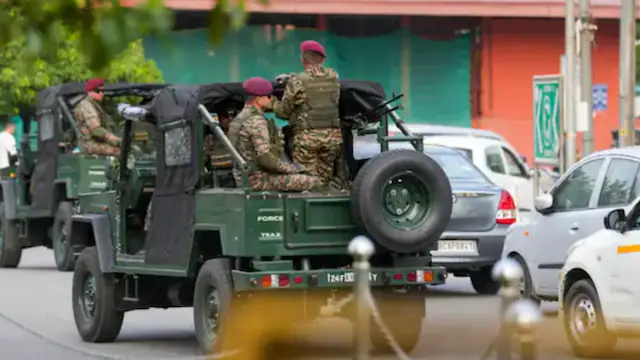India and Pakistan: The thin line between limited war and full-scale war.
India and Pakistan: The Thin Line Between Limited War and Full-scale War
Mir Ahmad Reza Musharraf, Expert on Subcontinental Issues
Military tension between India and Pakistan is entering its fourth day in a situation that has raised questions and concerns about various aspects of this conflict.
Quds; First of all, this question and this important concern are raised: Can these developments, as Pakistani Defense Minister Khawaja Muhammad Asif warns, turn into a full-scale war and even a catastrophic nuclear confrontation between the two countries?
In this context, and most importantly, some warn about a “miscalculation” that could lead to unforeseen events. This is especially evident in the absence of emergency communication mechanisms and channels between the two sides. On the other hand, the difference in the nuclear doctrines of the two countries, namely Pakistan’s “first use” doctrine in contrast to India’s “no first use, but massive retaliation” doctrine, can also create an unstable balance. On the other hand, the significant difference between the two countries in the field of military capabilities and conventional weapons can also be effective in encouraging the weaker country to use nuclear weapons as quickly as possible, as is evident in the case of Pakistan and its repeated threats to enter the region into a full-scale nuclear war. Finally, the reluctance of countries to effectively mediate in the conflict can also be effective in changing the conditions of the conflict towards a full-scale war.
Despite all these, the view of most political and military experts is that the current war between India and Pakistan will remain within the framework of a limited and controlled war. Maintaining an official diplomatic channel of contact between the two countries at the height of the crisis (direct telephone contact between the national security advisers of the two countries), the belief of the two countries and even the international community in the continued effectiveness of nuclear deterrence and some of Pakistan’s military successes in the field of conventional weapons (especially in the air) may be able to partially guarantee the survival of the current situation.
Finally, the second important question is, how long will this war continue? The answer to this question depends largely on the extent to which each side achieves its predetermined goals. In the case of Pakistan, it must be said that this event has brought multilateral benefits to this country; creating a sense of unity and integrity at the national level, enhancing the role and position of the army at home, raising the Kashmir issue again, and possibly improving relations between the army and opposition factions. However, there is no precise vision of the goals regarding India. Convincing domestic public opinion, creating a renewed deterrence against Pakistan that had been in place since the 2019 Balakot war, and perhaps most importantly, using this opportunity to review water issues and dilemmas between the two countries are likely part of these goals, and it remains to be seen to what extent each side sees them fulfilled in the coming days.

